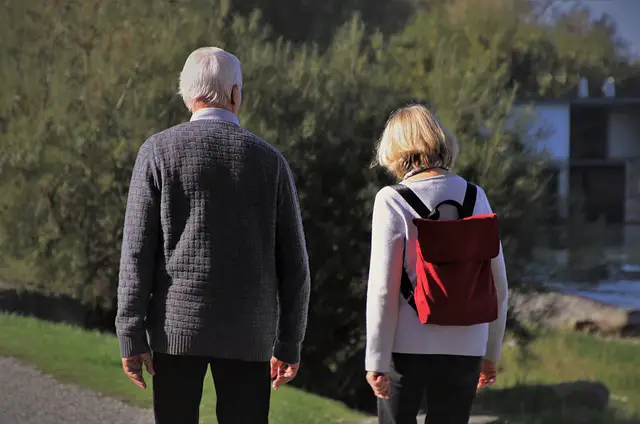
Walk and Talk: Why It’s Important
Here is something more ominous than “can’t walk and chew gum at the same time”, and that is the inability to walk and talk simultaneously. The inability to walk and talk simultaneously may be an early sign of dementia.
This study from Spain looked at the link between dual-task gait performance and falls and dementia and was published in The Lancet: Healthy Longevity. The ability to maintain walking performance while performing other tasks begins to decline in the middle of the 6th decade of life. Decline in dual-task walking can lead to falls and injuries.
Dr. Junhong Zhou was the lead researcher of the Spain study. He is an assistant scientist at Hinda and Arthur Marcus Institute for Aging Research at Harvard Medical School.
Dual-task walking appears to be a marker for brain health. Usually, when confronted with dual-task walking, older adults will focus more on one task than the other. Walking is frequently performed in association with talking, making decisions, reading signs, and just good ole plain thinking.
The aging brain is challenged with the ability to handle multiple tasks simultaneously. As the brain ages connections between neurons (nerve cells) decline and the brain becomes less efficient at processing information and performing motor skills. This drop in interconnectivity of brain cells is more pronounced in the areas of the brain involved in attention.
We see a decline in brain function with aging – something I think we all recognize. Previous studies have shown that those with a greater inability to do two tasks at once have a significantly greater risk of developing dementia.
Research on the potential benefits of dual-task training is being conducted. At this point, it is unknown how much effect interventions will have when started decades before brain function decline begins. But it is almost certain that starting dual-task training at the time of decline will likely be too late.
Dancing: the Walk and Talk Test
In Raise Your IQ: How Dancing Improves Intelligence we discussed that dancing integrates several brain functions at once including kinesthetic, rational, musical, and emotional functions, and that dance stimulates more neural connections to develop. Perhaps dancing is the ultimate dual-task training system. Along the same lines, Tai chi may provide similar benefits. See Tai Chi Improves Memory and Thinking.
Maybe there are benefits to the multi-tasking that many of us are engaged in throughout the day nowadays.
Walk and talk seems like a simple task but obviously, it is more challenging for some. If you have aging parents or grandparents who you suspect have some cognitive decline, why not take them for a walk and talk and see how well they walk and how well they carry on a conversation?
And, don’t laugh at the person who can’t walk and chew gum at the same time. They may have more going on than just being a klutz.
